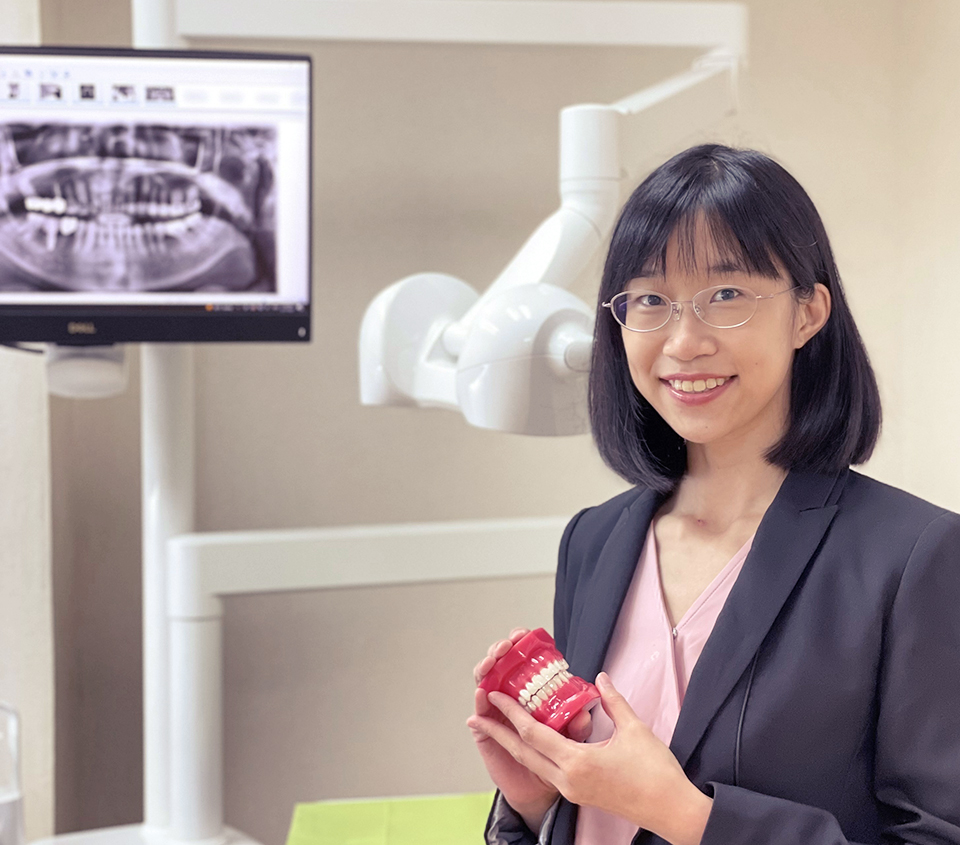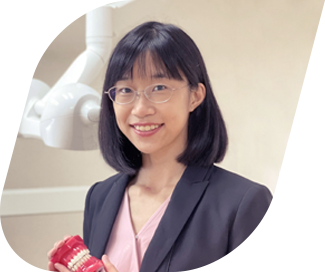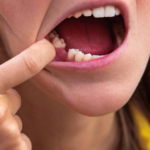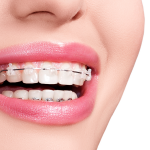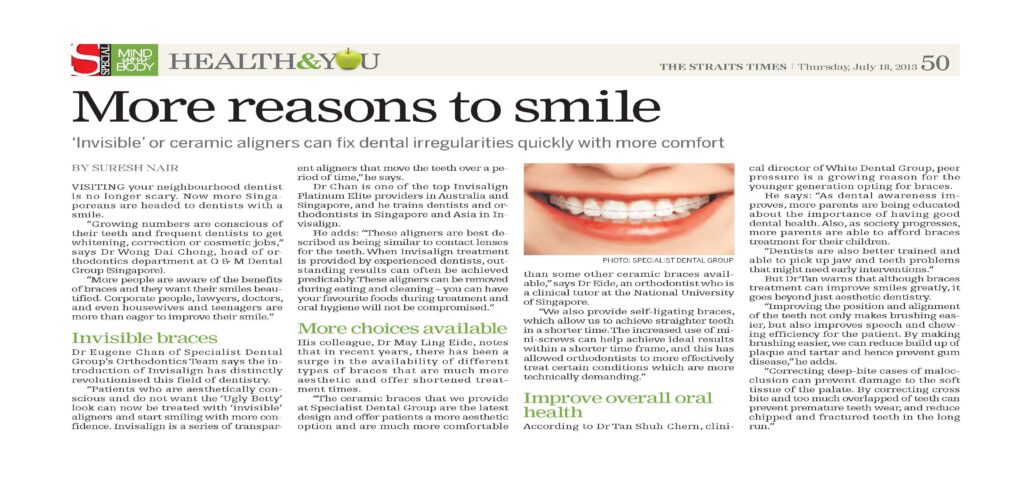Braces treatment in Singapore
Orthodontist-led smile straightening you can trust. Book a 30 minute consultation to get started!
Or call: +65 6734 9393
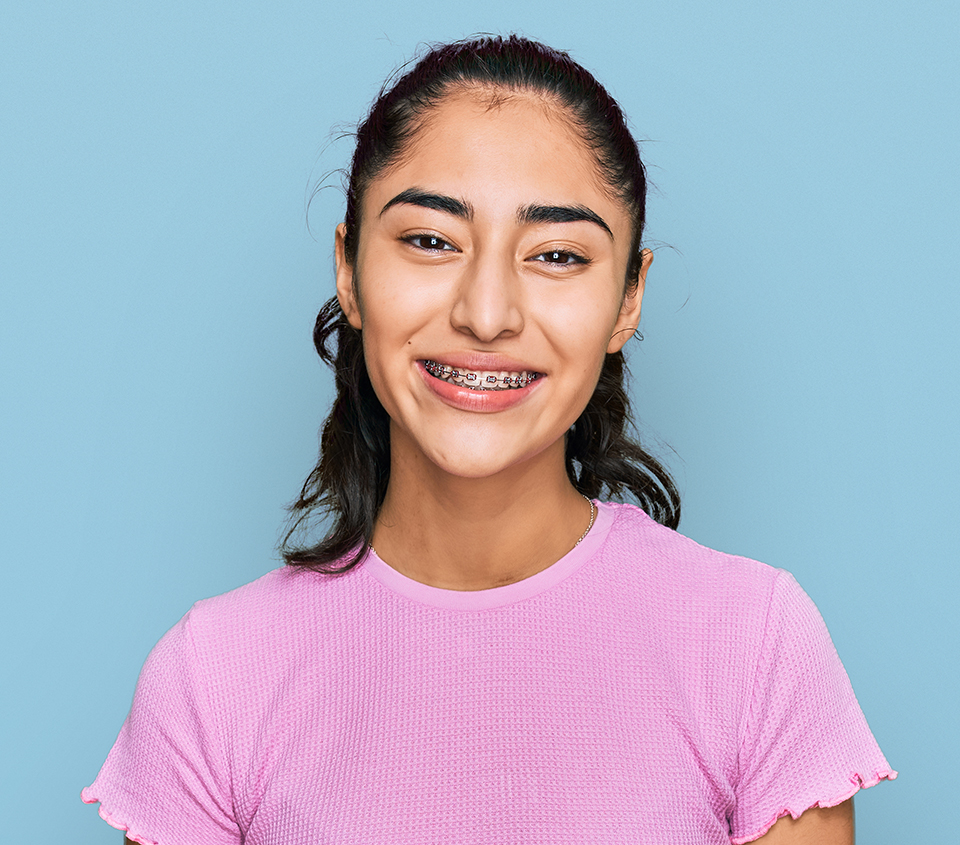
Orthodontist-led smile straightening
Dental braces are a common orthodontic treatment that helps align teeth and create a beautiful smile. They can correct crooked, protruding, or uneven teeth and close gaps between teeth. In addition to improving your smile, braces help promote better oral hygiene by aligning teeth and preventing food from getting trapped between teeth. With straight and aligned teeth, brushing and flossing become more accessible and effective, leading to healthier teeth and gums in the long run.

What are dental braces?
Dental braces are wire-based appliances that help manage crowded or misaligned teeth and jaws. They can also address dental issues like overbites and underbites, leading to possible improvements in bite activity and facial appearance. A typical treatment can span two to 2.5 years, but the duration can vary based on individual conditions.
What are the types of braces available?
- Fixed braces
- Metal braces
- Ceramic braces
- Self-ligating braces
- Lingual braces
- Removable braces (Invisalign® is a popular and proven dental treatment that uses clear, removable aligners to give you your desired smile.)
What are metal braces?
Metal braces are a traditional and reliable option for straightening teeth gradually. They consist of stainless steel brackets and wires, providing visible results over time. The cost of metal braces and treatment duration may vary depending on individual needs, and a more accurate estimate can be obtained after an initial consultation with our dental specialists.
That said, metal braces are the most cost-efficient option among fixed braces. They also offer some customisation options, allowing patients to choose the colour of the elastic ties that bind the wires to the brackets.
However, it’s important to note that metal braces are more visible than other orthodontic options, making them less discreet. Some patients may also experience initial discomfort due to the presence of metal brackets and wires. Regular cleaning and care are recommended to prevent food particles from getting trapped and to maintain good oral hygiene during the treatment period.
What are ceramic braces?
Ceramic braces offer a more aesthetic alternative to traditional metal braces as they are made to match the colour of your teeth. Like metal braces, ceramic braces are affixed to the teeth, and metal alloy wires are threaded through slots in the ceramic brackets, held together by tiny rubber bands.
The duration of wearing ceramic braces can vary from one to three years, depending on individual needs and the severity of the dental issue. A more accurate timeline can be provided after an assessment by dental specialists.
However, there are certain considerations to keep in mind when opting for ceramic braces. They may require more maintenance compared to metal braces. The clear or white elastics used with ceramic braces can stain easily, so proper care and regular brushing are recommended to prevent discolouration.
What are self-ligating braces?
Self-ligating braces are designed with a gate mechanism that gently holds onto the archwires, providing optimal comfort compared to metal and ceramic braces. In Singapore, they also require fewer appointments, on average, compared to traditional braces. Maintaining oral hygiene is more manageable with self-ligating braces, as they have reduced plaque accumulation.
In addition, these braces are durable and rarely break, ensuring a more reliable treatment experience. They are aesthetically pleasing, as they lack visible ligatures, elastic bands, or wires, making them a subtler choice than conventional metal braces.
However, self-ligating braces may be slightly more expensive due to their features. While they require fewer visits, adjustments can be more intensive than traditional braces when they are necessary. It’s important to note that self-ligating braces may not be suitable for all orthodontic issues.
What are lingual braces?
Lingual braces are a type of orthodontic treatment that is placed on the back of your teeth, making them unnoticeable to others when you smile, providing a discreet orthodontic solution. The materials and methods used for lingual braces are similar to conventional metal braces, ensuring a familiar treatment approach.
However, it’s important to note that there may be an adjustment period when wearing lingual braces. There may also be some initial discomfort due to their placement near the tongue. In terms of treatment duration, lingual braces generally have a similar timeline to conventional braces. The exact duration may vary based on individual needs and dental conditions.
What is Invisalign?
Invisalign is another alternative to traditional braces, using clear, custom-made aligners to help straighten teeth. Made with 3D technology, these aligners are nearly invisible and designed to fit each individual’s mouth perfectly.
Unlike regular braces, Invisalign is removable, allowing for easy eating and cleaning. Without metal parts, they’re also more comfortable to wear, reducing the risk of mouth irritations. With regular updates to the aligner sets and consistent check-ups, Invisalign can be helpful in gradual teeth straightening.
However, Invisalign requires discipline – the aligners have to be worn for a minimum of 20 to 22 hours a day. For more information, please refer to the Invisalign page.
What does the typical braces treatment in Singapore involve?
For most patients, the best time to start braces is after permanent teeth have replaced all their milk teeth. That will usually be between the ages of 11 to 14 years old. Contrary to popular notion, adults can also reap the same benefits as teenagers from braces treatment.
During the initial consultation, our dental specialist will find out the details of your medical and dental history, discuss concerns you have with your teeth and advise the best form of orthodontic treatment to align them. Your orthodontist will take clinical records such as X-rays, impressions and photos of the teeth to aid in an accurate diagnosis and planning of the treatment and type of braces for you.
Subsequent appointments involve insertion and adjustment of the braces. Insertion may take between one and three visits to complete, depending on the type of braces you are getting.
After the braces are in the mouth, your orthodontic specialist will review and adjust your braces every four to eight weeks. You should avoid biting on large hard pieces of food (e.g. biting into an apple) to prevent dislodgement of your braces.
Initially, there may be some discomfort and a feeling of tightness. Your teeth feel sore because they are moving into alignment. After a few days, you should feel better.
The inner side of your cheeks or lips may get an ulcer from rubbing against the braces. Use dental wax from your orthodontic specialist/dentist to quickly and easily relieve the sore.
Treatment with fixed braces usually takes between two and three years, although it may sometimes be adjusted shorter and longer depending on the complexity of the case. After your braces are removed, your orthodontist will provide you with removable or fixed retainers. Retainers need to be used throughout your life. They are important as they hold your teeth in their corrected positions after the braces have been removed.
After getting your retainers fitted, schedule a visit with your dental specialist within one to three months. Following that, you can align your subsequent visits with your routine six-monthly dental check-ups.
How long will I have to wear braces in Singapore?
The duration of wearing braces varies depending on individual needs, but generally, it can range from one to three years. Our dental specialists will assess your case and provide a more accurate timeframe for your braces treatment in Singapore.
How often should I visit the dentist during my braces treatment?
Regular visits to the dentist are essential during your braces treatment. Typically, patients are advised to come in for adjustments every four to eight weeks to ensure progress and make necessary adjustments to the braces.
What should I take note of when having braces?
Braces require a series of appointments to complete. For visible results, you are recommended to keep to your scheduled appointments and brush your teeth well. Regular professional dental cleaning every three to six months can be helpful to ensure a desired overall treatment outcome. Caring for your braces and preventing breakages also helps to ensure that you complete your treatment within the expected duration.
How much do braces cost in Singapore?
The fees of getting braces varies depending on the individual. There may be additional fees for other treatments, such as tooth extraction. For a more accurate estimate of the total fees involved, it is advisable to schedule a consultation with a dental professional.
Please note that braces treatment is not claimable under Medisave. Medisave coverage is limited to certain dental surgical procedures. For more details on Medisave coverage, please visit our Medisave page.
Meet our orthodontist in Singapore
At Specialist Dental Group, we pride ourselves on delivering exceptional dental care. With a team of internationally qualified dental specialists and surgeons who are leaders in their fields, we offer unparalleled expertise and experience. Our multi-speciality approach allows specialists to collaborate and comprehensively address your unique dental needs.
By leveraging advanced technology and techniques, we minimise pain and discomfort, prioritising your comfort throughout the treatment process – whether you are getting braces or complex dental surgery in Singapore.
Our commitment to research-based treatment, knowledge sharing, and patient satisfaction is evident through various prestigious awards and achievements. When you choose Specialist Dental Group, you can trust that you’re receiving top-quality dental care with peace of mind. Contact us today for more information.
Thinking about getting braces treatment in Singapore? Our orthodontic team handles the full range of misaligned teeth (malocclusions), including growth modifications. They work closely with the other dental specialists in the team to manage patients with jaw problems.
